A tomato plant needs the right pH level in the soil to produce a bountiful harvest. Without the right pH level, it will encounter problems such as stunted growth, yellowing of leaves, and poor fruit production.
Therefore, manipulating or adjusting the natural pH level in the soil is a simple and powerful step that will contribute to more robust and productive plant growth.
So, let us now discuss the various ways to lower the pH levels in the soil and create a perfect growing environment for tomato plants and also explore some of the best techniques for adjusting the soil pH that will make a big difference in your plant’s health and productivity.
Also, read: How To Grow Tomatoes In Raised Bed?
Consequences Of Alkaline Soil
Table of Contents
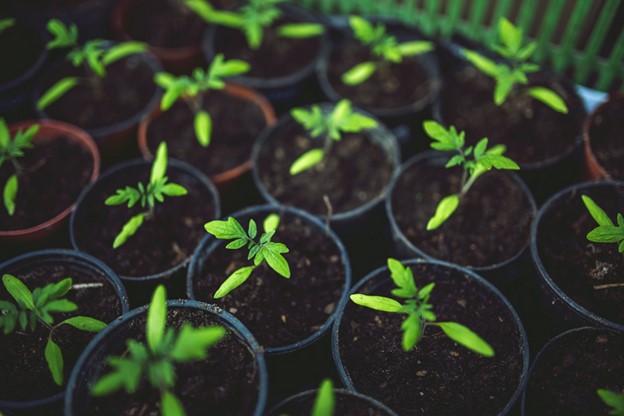
A highly alkaline soil with a pH balance of 7.0 and above can be very challenging for tomato plants, so extreme pH levels in the soil lead to several issues and impact the plant negatively:
- Deficiency of certain nutrients and poor absorption
- Reduced microbial activity
- Poor water retention and drainage
- Poor soil structure
- Increased susceptibility to diseases and pests
- Slow growth
- Poor crop yield
Reducing Soil pH In The Garden For Growing Tomato Plants
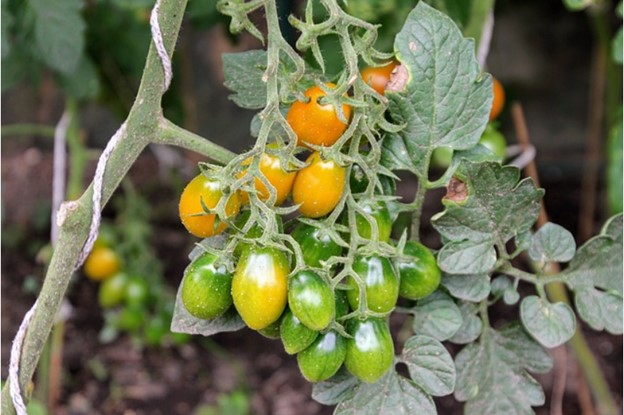
The tomato plants thrive in slightly acidic soil with a pH range of 6.0 to 6.8.
If your soil has a higher pH and is above 7.0, then lowering it will lead to healthier and better plant and fruit growth.
Below are some effective ways to lower the pH levels in the soil for better tomato growth.
1. Using Organic Matter
Think of applying a slow and sustainable organic matter since it will be gradually helpful in lowering the pH level in the soil and will additionally improve the soil structure.
The organic materials will enhance and enrich the soil and be effective in reducing the pH level as and when properly applied in moderation at the right time.
2. Apply Sulfur-based Amendments
Use sulfur-based amendments to lower the pH levels, as it is more effective and instantly reacts with the soil moisture for lowering the pH level.
The elemental sulfur converts the sulfuric acid through bacterial activity and helps in lowering the pH level in the soil. Aluminum sulfate acts fast in lowering the pH level.
3. Apply Right Fertilizers
Applying the right fertilizers to your tomato plants lowers the natural pH level of your soil and improves your soil health.
So, use acidifying fertilizers such as ammonium sulfate, urea, ammonia-based fertilizers, and compost manure to improve soil health and take care of the application process to avoid over-fertilization.
4. Adjust Watering And Mulching Techniques
Proper watering and mulching techniques are crucial for maintaining the right pH balance in the soil. So, adjust the watering and mulching techniques to lessen the pH level.
Additionally, avoid tap water as it is alkaline and instead switch to rainwater as it is free from chemicals and mineral deposits that can raise the pH levels. Harvesting rainwater in barrels and containers is therefore necessary for later use.
Using mulching techniques with acidic materials will help you to lower the soil pH gradually and also improve the soil texture and enrich it with the necessary organic acids.
5. Monitor The Soil
Monitor the pH level in the soil frequently and make the necessary adjustments or changes to maintain a balanced and healthy soil for the plants to thrive.
Also, note that overcorrection of the pH levels in the soil will lead to additional plant stress. So, wait for a few weeks, check for signs of nutrient deficiencies, and pay the necessary attention to prevent over-acidification.
To hand-pollinate tomatoes, read this detailed guide.
What Are The Signs That My Soil pH Is Too High For Tomato Plants?
Observe these warning signs, as these indicate your soil pH is too high for your tomato plants:
1. Yellowing Of Leaves
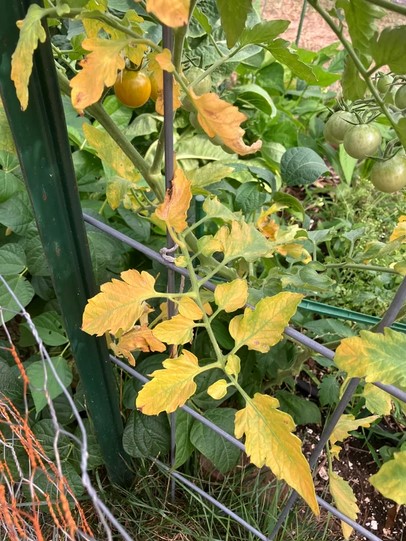
If the leaves of your tomato plants, especially the older ones, turn yellow, then this is because of the high pH in the soil, as high pH acts as an obstruction and prevents the plants from absorbing iron, magnesium, and other essential nutrients.
In this case, the younger leaves are affected in the beginning, and this issue can easily be solved by applying organic matter or using sulfur-based amendments.
2. Stunted Growth
If the tomato plants are struggling to grow then it is highly likely that the pH balance is high and this will eventually affect the fruit production and will ultimately lead to low fruit yield.
Slow plant growth and reduced fruit production will fail to develop strong stems, which can be solved by using iron sulfate or peat moss.
3. Purplish Or Reddish Leaves
Tomato plants with purple or red-colored leaves and stems are an indication that the pH scale is too high. Also, similar purplish or reddish leaves indicate a scarcity of phosphorus that eventually forces the plant to grow slowly and develop poor roots.
Composting manure or applying acidifying fertilizers will fix the problem and help to lower the pH level of the soil.
4. Blossom-end Rot
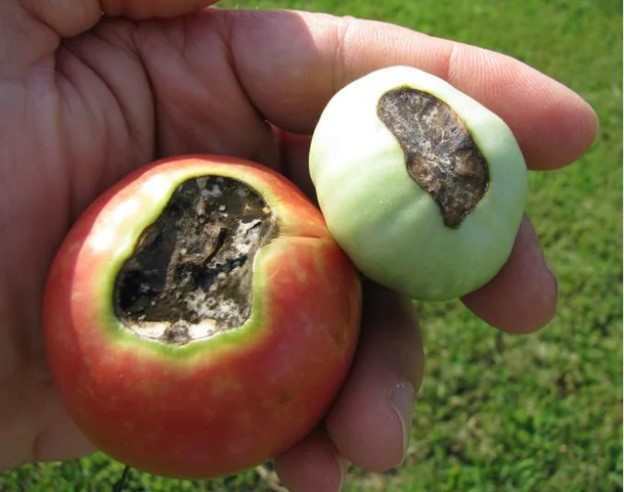
High pH in the soil results in blossom-end rot. It is a condition where the tomatoes turn black and rot at the bottom and is essentially caused by high pH in the soil along with a calcium deficiency.
In this condition, the fruits generally become inedible and suffer from a lack of calcium or disruption due to the alkaline soil.
5. Vulnerability To Diseases And Pests
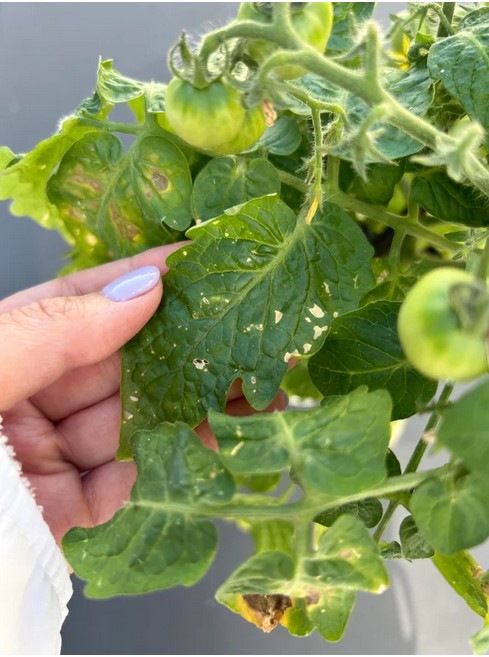
High pH levels in the soil result in increased susceptibility to diseases and pests; this is because the plants lose their natural defense mechanism and become more prone to pests and diseases due to high pH.
Therefore, proper pH levels yield healthy and disease-resistant plants. Additionally, to keep the pH levels in the soil under control, you can add mulch with pine bark and follow the crop rotation technique to maintain soil health.
Final Words
So, go ahead and think of creating a perfect pH for your soil and ensure healthy growth and a bountiful harvest.
This will be a huge and powerful step in making your tomato plants more productive, which will in turn result in a lush, vigorous, and delicious homegrown tomato and will ultimately pay off your hard work.
Leave a Reply